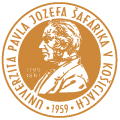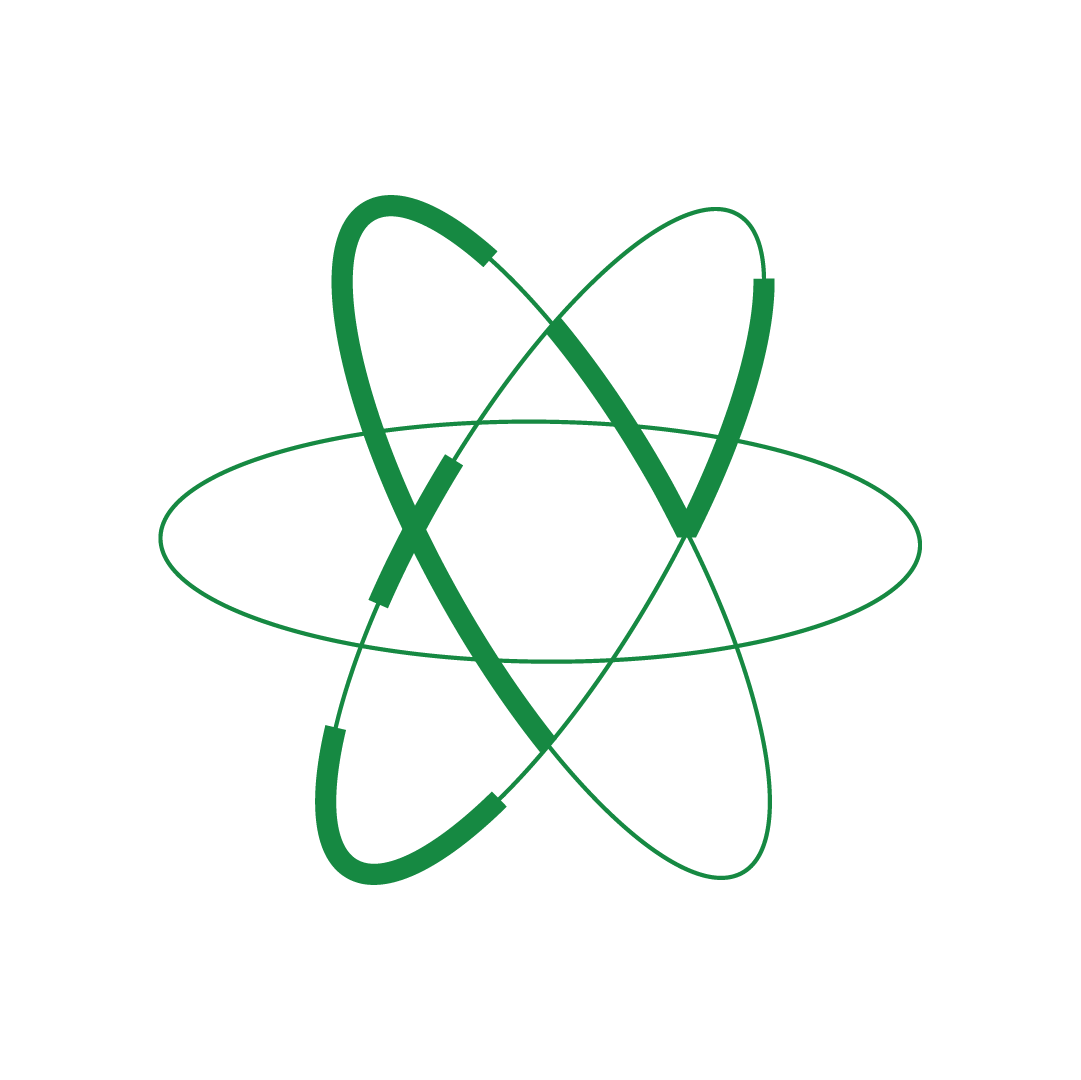Alžbeta Orendáčová
Professional profile
Professional career:
- 1981-1986 Study of Condensed matter physics at Faculty of Science P.J.Šafárik University in Košice
- 1986 RNDr. Faculty of Science, P.J.Šafárik University
- 1999 PhD. Faculty of Science, P.J.Šafárik University
- 1986-2000 Special assistant at Department of Experimental Physics, Faculty of Science, P.J.Šafárik University
- 2000-2007 research worker at Department of Condensed Matter Physics, Faculty of Science, P.J.Šafárik University
- 2007- senior research worker at Department of Condensed Matter Physics, Faculty of Science, P.J.Šafárik University
- 2012- associate professor, Department of Condensed Matter Physics, Faculty of Science, P.J.Šafárik University
Teaching:
Lectures:
- Magnetochemistry
- Condensed Matter Physics
- Spectroscopic methods
- Physics for chemists II
Exercises:
- General Physics I
- General Physics II– Electricity and magnetism
- General Physics III- Optics
- Magnetochemistry
PhD students: Olha Vinnik, Liliia Kotvytska
Research:
In the past, I studied amorphous semiconductors based on As2S3 at low temperatures. We studied the contribution of fractons to heat capacity. Fractons in quasiparticle formalism correspond to vibrations of fractals - random clusters of atom-clusters that are characteristic of the structure of amorphous materials.
At present I study the physical properties of low-dimensional magnetic materials, including their lattice subsystem. A one-dimensional system can be imagined as a set of magnetic moments arranged in a chain, a two-dimensional system as a set of magnetic moments forming a plane.
- We deal with the following materials:
- Heisenberg chains with spin 1 (based on nickel ion) where we investigate the influence of the crystal field on the character of magnetic interactions in chains.
- Ising chains and layers with spin 1/2 (based on rare earth ions) where we investigate the influence of dipole interaction, crystal field and lattice vibrations on the behavior of a low-dimensional magnetic system
- Heisenberg two-dimensional systems with spatially anisotropic square lattice and spin 1/2. In such lattices, the central spin has four nearest neighbors with which it can interact:
1. equally strong exchange interaction J (square lattice),
2. interacts with two neighbors via J and with two opposite neighbors through J ' (two-dimensional set of coupled chains = rectangular lattice)
3. interacts with two adjacent neighbors via J and with two adjacent neighbors via J '(two-dimensional set of coupled zigzag chains = zigzag square lattice, two-dimensional set of coupled tetramers,….)
4. interacts with one neighbor via J and the other three via J '(dimerized square lattice,…)
By rotating the basic clusters (2J '+ 2J, J' + 3J, J + 3J ') it is possible to obtain a large number of two-dimensional lattices differing from each other by the nature of the ground state (ordered collinear Neel state, S = 0 non-magnetic state) and properties at finite temperatures.
The research of such spatially anisotropic lattices has not a long tradition, as from a theoretical point of view it was, until recently, difficult to perform calculations on large lattices in order to exclude the influence of "finite size effects". From an experimental point of view, the first systems also appeared relatively late, as the lack of theoretical predictions and the difficulty of preparing high-quality and large single crystals did not allow a more accurate identification of the system. In this respect, the calculations from the first principles are very helpful, which, based on the knowledge of the crystal structure, will enable the calculation of the interaction constants Ji around the central atom.
Our study of the compound Cu (en) (H2O)2SO4 (CUEN), which was initially identified as the realization of a spatially anisotropic triangular lattice in a collinear Neel phase, which shares common features with a square lattice, also underwent such a complex process due to the above possibilities [1]. A subsequent study of electron paramagnetic resonance refuted this assumption and pointed to the existence of a square lattice and the importance of the dipole interaction, which is probably responsible for the interaction between the magnetic planes and their subsequent 3d arrangement at 0.9 K [2]. Only calculations from the first principles showed that CUEN is the first implementation of a zigzag square lattice, which was also confirmed by analyzes of thermodynamic data within the model, while theoretical predictions were numerically calculated by the quantum Monte Carlo method for 120x120 spin lattice [3]. In this work, we have shown, among other things, that even in such a lattice the magnetic field induces quantum spin vortices and the related Berezinski-Kosterlitz-Thouless (BKT) phase transition theoretically predicted for an ideal square lattice. In the context of vortices, the BKT junction is also observed in superconductors in the magnetic field and superfluid helium in the non-inertial system. In further work focused on the extraction of a low-dimensional system in CuenCl2, we have shown that despite the strong influence of interlayer interactions, it is possible to extract information about low-dimensional magnetism when applying magnetic fields higher than saturation field if sufficient theoretical predictions are available [4].In addition, the Heisenberg models on the zigzag square lattice and the rectangular lattice have been found to be equivalent both in the ground state and at finite temperatures, in both zero and non-zero magnetic fields. Therefore, this equivalence does not make it possible to distinguish which real system it is, unless calculations are made from the first principles.
[1] M. Kajňaková, M. Orendáč, A. Orendáčová, et al., Phys. Rev. B 71, 014435 (2005).
[2] R. Tarasenko, A. Orendáčová, E. Čižmár et al, Phys. Rev. B 87, 174401 (2013).
[3] L. Lederová, A. Orendáčová, J. Chovan et al, Phys. Rev. B 95, 054436 (2017).
[4] L. Lederová, A. Orendáčová, R. Tarasenko, et al, Phys. Rev. B 100, 134416 (2019).
Member of a scientific organization: Slovak Physical Society
Projects:
Responsible project leader:
1. Quantum magnetism in geometrically frustrated magnets VEGA 1/3027/06, 2006-2008.
2. Influence of magnetic field on quantum processes in geometrically frustrated magnetics VEGA 1/0078/09, 2009-2012,
3. Study of quantum processes in low-dimensional magnetic systems. APVV, LPP-0202-09, 2009-2013.
4. Influence of magnetic dimensionality and spin anisotropy on quantum processes in geometrically frustrated magnets, VEGA 1/0143/13, 2013-2016
5. Influence of magnetic field and spin anisotropy on the ground state and critical behavior of two-dimensional quantum magnets VEGA 1/0269/17, 2017-2020.
6. Relaxation processes in quantum magnets APVV-18-0197, 2019-2023
Collaboration:
- University of Florida, Florida
- Forschungszentrum Julich, Julich,
- High Magnetic Field Laboratory, Rossendorf-Dresden
- Helmholtz Zentrum Berlin
- IT4Innovations, VSB-Technical University of Ostrava
- Charles University, Prague
- University of Chemistry and Technology, Prague
Selected publications:
M. Orendáč, A. Orendáčová, J. Černák, A. Feher, P.J.C. Signore, M.W. Meisel,S. Merah and M. Verdaguer"Thermodynamic and Magnetic properties of the S=1 Heisenberg chain Ni(C2H8N2)2Ni(CN)4: Experiments and theory" Phys. Rev. B 52 3435 (1995). http://prola.aps.org/abstract/PRB/v52/i5/p3435_1
N. Papanicolaou, A. Orendáčová and M. Orendáč "Electron-spin resonance in spin-1 planar magnetic chains" Phys. Rev. B 56 8786 (1997). http://prola.aps.org/abstract/PRB/v56/i14/p8786_1
M.Orendáč, E.Čižmár, A.Orendáčová, J.Černák, A.Feher, M.V.Meisel, K.A.Abboud, S.Zvyagin,M.Sieling, T.Rieth and B.Luthi "Magnetic and Thermodynamic Properties of Ni(C10H8N2)2Ni(CN)4H2O: an S = 1 Heisenberg Antiferromagnetic Chain with Strong In-plane Anisotropy and Subcritical Exchange Coupling", Phys.Rev. B 61, 3223-3226 (2000) http://prola.aps.org/abstract/PRB/v61/i5/p3223_1
M.Orendáč, S.Zvyagin, M. Orendáčová, M.Sieling, B.Luthi, A.Feher, M.W.Meisel, "Single-ion Bound States in S = 1 Heisenberg Antiferromagnetic Chains with Planar Anisotropy and Subcritical Exchange Coupling" Phys.Rev. B60, 4170-4175 (1999) http://prola.aps.org/abstract/PRB/v60/i6/p4170_1
D.Horváth, A.Orendáčová, M.Orendáč, M.Jaščur, B.Brutovský, A.Feher, "KEr(MoO4)2: A quasi-one-dimensional S = 3/2 Blume -Capel system", Phys.Rev. B60, 1167-1174 (1999) http://prola.aps.org/abstract/PRB/v60/i2/p1167_1
A. Orendáčová, D. Horváth, M. Orendáč, E. Čižmár, M. Kačmár, V. Bondarenko, A. G. Anders, and A. Feher Monte Carlo studies of the magnetic phase diagram of KEr(MoO4)2: A dipolar magnet with strong tetragonal distortion Phys. Rev. B 65, 014420 (2001) http://prola.aps.org/abstract/PRB/v65/i1/e014420
J. D. Champion, M. J. Harris, P. C. Holdsworth, A. S. Wills, G. Balakrishnan, S. T. Bramwell, E. Čižmár, T. Fennell, J. S. Gardner, J. Lago, D. F. McMorrow, M. Orendáč, A. Orendáčová, D. McK. Paul, R. I. Smith, M. T. Telling, and A. Wildes Er2Ti2O7: Evidence of quantum order by disorder in a frustrated antiferromagnet Phys. Rev. B 68, 020401 (2003) http://prola.aps.org/abstract/PRB/v68/i2/e020401
M. Orendáč, A. Orendáčová, E. Čižmár, J.-H. Park, A. Feher, S. J. Gamble, S. Gabáni, K. Flachbart, J. Karadamoglou, M. Poirier, and M. W. Meisel Nonlinear excitations in CsNiF3 in magnetic fields perpendicular to the easy plane Phys. Rev. B 69, 184403 (2004) http://link.aip.org/link?prb/69/184403
M. Kajňaková, M. Orendáč, A. Orendáčová, A. Vlček, J. Černák, O. V. Kravchyna, A. G. Anders, M. Bałanda, J.-H. Park, A. Feher, and M. W. Meisel Cu(H2O)2(C2H8N2)SO4: A quasi-two-dimensional S = Heisenberg antiferromagnet Phys. Rev. B 71, 014435 (2005) http://link.aip.org/link?prb/71/014435
Vladimír Zeleňák, Alžbeta Orendáčová, Ivana Císařová, Juraj Černák, Oxana V. Kravchyna, Ju-Hyun Park, Martin Orendáč, Alexander G. Anders, Alexander Feher, and Mark W. Meisel Magneto-Structural Correlations in Cu(tn)Cl2 (tn = 1,3-Diaminopropane): Two-Dimensional Spatially Anisotropic Triangular Magnet Formed by Hydrogen Bonds Inorganic Chemistry 45 1774 (2006) http://pubs.acs.org/cgi-bin/abstract.cgi/inocaj/2006/45/i04/abs/ic0516109.html
M. Orendáč, J. Hanko, E. Čižmár, A. Orendáčová, M. Shirai, and S. T. Bramwell Magnetocaloric study of spin relaxation in dipolar spin ice Dy2Ti2O7 Phys. Rev. B 75, 104425 (2007) http://link.aip.org/link?prb/75/104425A.
Orendáčová, E. Čižmár, L. Sedláková, J. Hanko, M. Kajňaková, M. Orendáč, A. Feher, J. S. Xia, L. Yin, D. M. Pajerowski, M. W. Meisel, V. Zeleňák, S. Zvyagin and J. Wosnitza: Interplay of frustration and magnetic field in the two-dimensional quantum antiferromagnet Cu(tn)Cl2, Phys. Rev. B 80 (2009) 144418. http://link.aps.org/doi/10.1103/PhysRevB.80.144418
M. Orendáč, L. Sedláková, E. Čižmár, A. Orendáčová, A. Feher, S. A. Zvyagin, J. Wosnitza, W. H. Zhu, Z. M. Wang, and S. Gao, Spin relaxation and resonant phonon trapping in [Gd2(fum)3(H2O)4]⋅3H2O, Phys. Rev. B 81, 214410 (2010). http://link.aps.org/doi/10.1103/PhysRevB.81.214410
S. Maťaš, E. Dudzik, R. Feyerherm, S. Gerischer, S. Klemke, K. Prokeš, A. Orendáčová: Neutron diffraction study on the two-dimensional Ising system KEr(MoO4)2, Phys.Rev.B B 82, 184427 (2010). https://doi.org/10.1103/PhysRevB.82.184427
R. Tarasenko, A. Orendáčová, E. Čižmár, S. Maťáš, M. Orendáč, I. Potočňák, K. Siemensmeyer, S. Zvyagin, J. Wosnitza, and A. Feher, Spin anisotropy in Cu(en)(H2O)2SO4: A quasi-two-dimensional S = 1/2 spatially anisotropic triangular-lattice antiferromagnet. Phys.Rev.B 87, 174401 (2013). https://doi.org/10.1103/PhysRevB.87.174401
V. Tkáč, A. Orendáčová, E. Čižmár, M. Orendáč, and A. Feher, Giant reversible rotating cryomagnetocaloric effect in KEr(MoO4)2 induced by a crystal-field anisotropy Phys.Rev.B 92, 024406 (2015) https://doi.org/10.1103/PhysRevB.92.024406
M. Orendáč, K. Tibenská, J. Strečka, J. Čisárová, V. Tkáč, A. Orendáčová, E. Čižmár, J. Prokleška and V. Sechovský, Cross-tunneling and phonon bottleneck effects in the relaxation phenomena of XY pyrochlore antiferromagnet Er2Ti2O7 , Phys.Rev.B 93, 024410 (2016). https://doi.org/10.1103/PhysRevB.93.024410
M. Orendáč, R. Tarasenko, V. Tkáč, A. Orendáčová, and V. Sechovský, Specific heat study of the magnetocaloric effect in the Haldane-gap S = 1 spin-chain material Ni(C2H8N2)2NO2](BF4), Phys.Rev.B 96, 094425 (2017), https://doi.org/10.1103/PhysRevB.96.094425
L. Lederová, A. Orendáčová, J. Chovan, J. Strečka, T. Verkholyak, R. Tarasenko, D. Legut, R. Sýkora, E. Čižmár, V. Tkáč, M. Orendáč and A. Feher, Realization of a spin-1/2 spatially anisotropic square lattice in a quasi-two-dimensional quantum antiferromagnet Cu(en)(H2O)2SO4 , Phys.Rev.B 95, 054436 (2017). https://doi.org/10.1103/PhysRevB.95.054436
L. Lederová, A. Orendáčová, R. Tarasenko, K. Karl’ová, J. Strečka, A. Gendiar, M. Orendáč, and A. Feher, Interplay of magnetic field and interlayer coupling in the quasi-two-dimensional quantum magnet Cu(en)Cl2: Realization of the spin-1/2 rectangular/zigzag square Heisenberg lattice, Phys.Rev.B 100, 134416 (2019). https://doi.org/10.1103/PhysRevB.100.134416
V. N. Glazkov, Yu. V. Krasnikova, I. K. Rodygina, J. Chovan, R. Tarasenko, and A. Orendáčová, Splitting of antiferromagnetic resonance modes in the quasi-two-dimensional collinear antiferromagnet Cu(en)(H2O)2SO4 Phys.Rev.B 101, 014414 (2020) https://doi.org/10.1103/PhysRevB.101.014414
Hobbies: Tourism, history, classical music, fine arts




